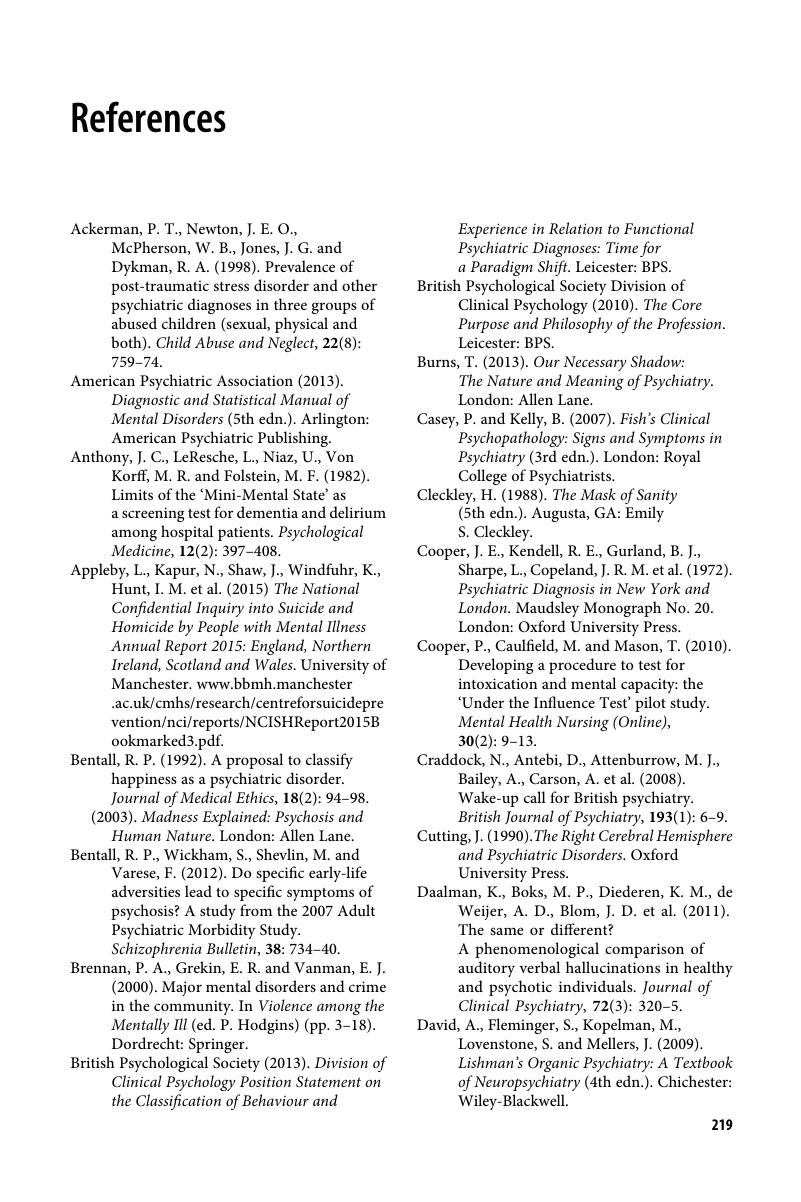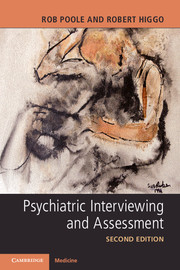Book contents
- Psychiatric Interviewing and AssessmentSecond Edition
- Psychiatric Interviewing and Assessment
- Copyright page
- Dedication
- Contents
- Preface
- Acknowledgements
- Section 1 What Am I Trying To Find Out Here?
- Section 2 The Main Principles of One-To-One Interviewing
- Section 3 Difficult Interviews
- Section 4 Self-Awareness
- Section 5 Complicated Interviews
- Section 6 Developmental Assessments
- Section 7 Drawing It All Together
- Afterword
- References
- Index
- References
References
Published online by Cambridge University Press: 30 August 2017
- Psychiatric Interviewing and AssessmentSecond Edition
- Psychiatric Interviewing and Assessment
- Copyright page
- Dedication
- Contents
- Preface
- Acknowledgements
- Section 1 What Am I Trying To Find Out Here?
- Section 2 The Main Principles of One-To-One Interviewing
- Section 3 Difficult Interviews
- Section 4 Self-Awareness
- Section 5 Complicated Interviews
- Section 6 Developmental Assessments
- Section 7 Drawing It All Together
- Afterword
- References
- Index
- References
Summary

- Type
- Chapter
- Information
- Psychiatric Interviewing and Assessment , pp. 219 - 221Publisher: Cambridge University PressPrint publication year: 2017



